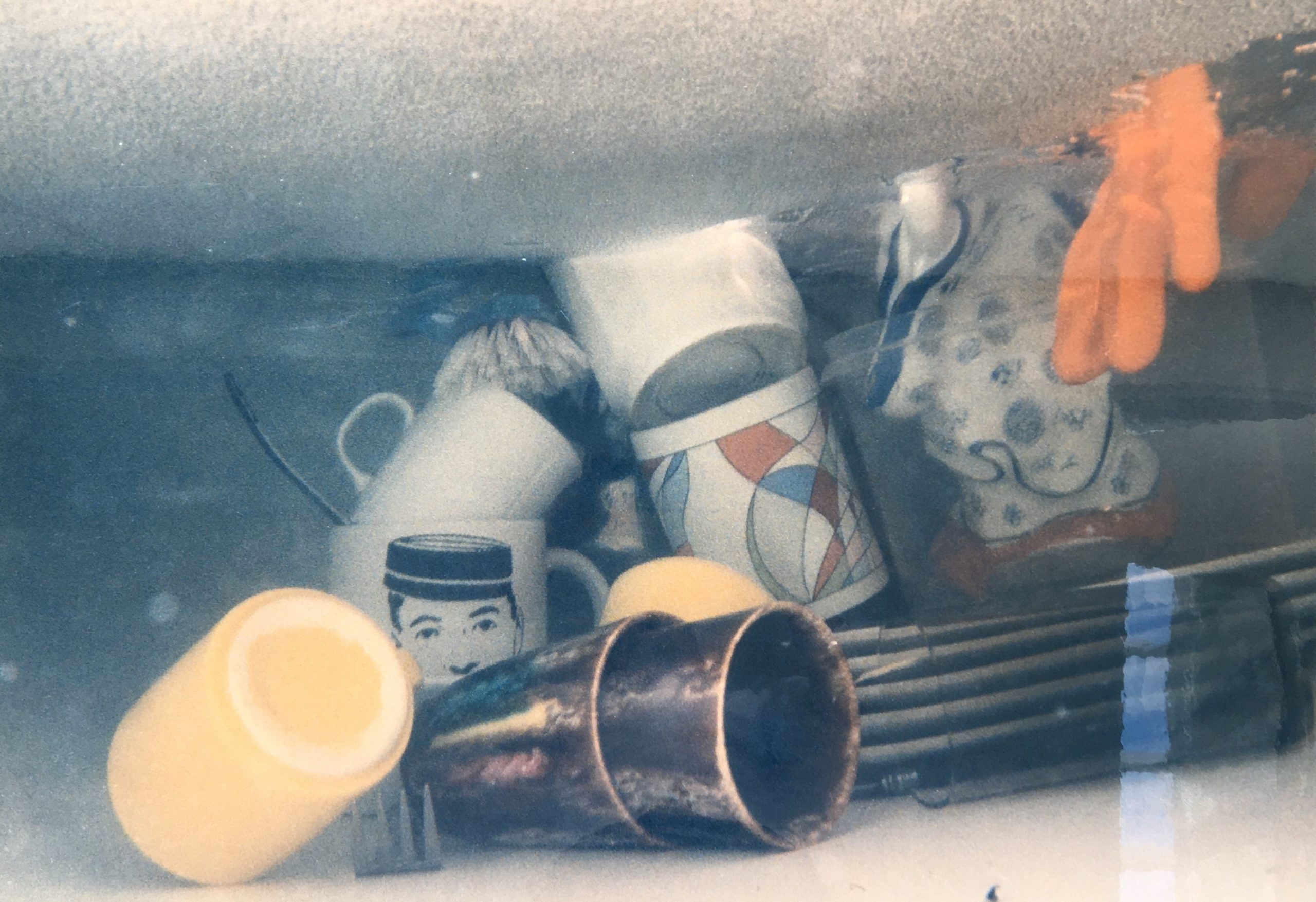Raúl Flores (Córdoba, 1965) has been building his photographic work in an intersection between conceptual serialization and banal topics, resulting in numerous bodies of images. Photographs that gather undifferentiated objects, taken from a similar industrial matrix or endowed with a similar utilitarian sense, as if none of them added anything to what the others could mean. A photographic document which is taken almost to the zero degree of technique -practically to an a-signifying technique-, in such a way that the opaque character of the photographic object is always highlighted. But it is precisely there, in that information-laden monotony, where these photographed objects become historical material while they reveal their obsolescence.
His series of images are named to indicate their central photographic object, which is repeated in his rather large series, all very similar to each other. Thus “Rations”, are Polaroids of the food he bought with a fixed budget of two dollars a day (1997); “Refrigerators” are images showing the insides of fridges in the homes of the artist’s friends (1997); “Sinks” are taken with an underwater camera at the bottom of a kitchen sink (1999), “Garbage” (1999), which records street baskets to place household waste or “Gauchesco” and “Tierra Santa” (both, 2000), which document the installations of the Museo Histórico de Cera de La Boca and the Tierra Santa religious theme park, respectively.
They are, as art historian Marcelo Pacheco writes, “a succession of banalities that the photographer records here and there with little technical shame and little thematic responsibility”. Images of a domestic world that crystallizes in that photographic blur and in the provocative enlargement that confronts us with those details that we did not think we were willing to look at. Objects and situations that are turned into quasi-sculptural monuments thanks to that impudent gaze, between urgent and calm. A visual world so at the antipodes of Instagram, a perfectly imperfect and extremely contemporary universe.
Thus, almost from anti-photography, Flores’ images are as photographic as possible: chronicles of epochs, automatic witnesses, voyeurs of the (in)visible, shameless (auto)biographies, and above all, fetishes. But Flores puts a rattle and a mirror in front of that fetish, forces it to look at itself frozen and then become its own salt statue.


 Flores Raúl
Flores Raúl